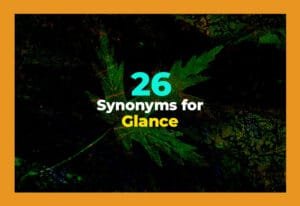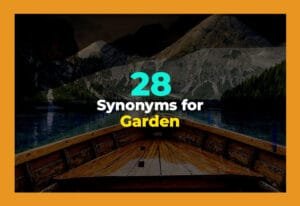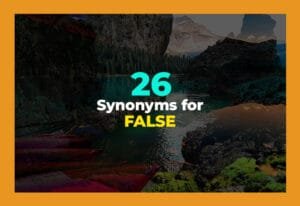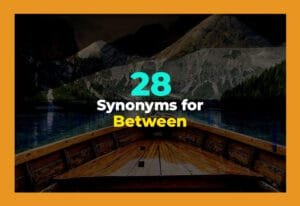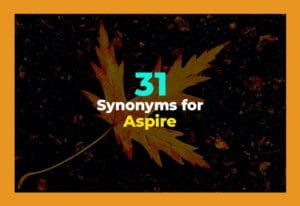Saying you are welcome is one of the simplest ways to show kindness and politeness in everyday conversations. Instead of always saying you are welcome, there are many other ways to respond that feel friendly and natural. You can say things like no problem, anytime, or glad to help. In this article, we will explore 16 other ways to say you are welcome with easy examples you can use in real life.
1. No Problem
No problem is a very easy and casual way to say you are welcome. People use it when they want to sound friendly and relaxed. It shows that helping someone was not difficult at all. You can use no problem with friends, family, or even coworkers. It works in almost every casual situation.
- No problem, I can help you with that.
- No problem, I will carry your bag.
- No problem, you do not need to worry.
- No problem, I already finished it.
- No problem, I can join you later.
- No problem, I will pick it up.
- No problem, I understand what you mean.
- No problem, it is not a big deal.
- No problem, I am happy to help.
- No problem, just ask me anytime.
2. Anytime
Anytime is a warm way to show that you are always happy to help someone. It tells the other person that they can ask you again without feeling bad. This phrase works very well with friends, family, or coworkers in casual conversations. Anytime shows friendliness and support.
- Anytime, I am here for you.
- Anytime, I can help you with homework.
- Anytime, I will listen to your problems.
- Anytime, you can call me.
- Anytime, I will help you with shopping.
- Anytime, I will give you a ride.
- Anytime, I am happy to explain.
- Anytime, I can meet you tomorrow.
- Anytime, I am happy to help.
- Anytime, just let me know.
3. Glad to Help
Saying glad to help is polite and shows that you are happy to do something for someone. It sounds warm and friendly, and it works in many situations. This phrase is often used in workplaces, schools, and daily life. People feel appreciated when you say glad to help because it shows you are happy to help.
- I am glad to help you with that.
- Glad to help, I enjoy doing it.
- I am glad to help anytime you need.
- Glad to help, do not worry about it.
- I am glad to help you finish this.
- Glad to help, it is my pleasure.
- I am glad to help you study.
- Glad to help, it is easy for me.
- I am glad to help anytime.
- Glad to help, you can ask me again.
4. No Worries
No worries is a casual and friendly way to say you are welcome. It shows that you are relaxed and happy to help. People use it often in informal situations with friends or family. Saying no worries makes the other person feel comfortable and not guilty.
- No worries, I can help you.
- No worries, I will do it.
- No worries, it is fine.
- No worries, I understand.
- No worries, I can fix it.
- No worries, just take your time.
- No worries, I already did it.
- No worries, I will help you tomorrow.
- No worries, I enjoy helping.
- No worries, it is not a problem.
See Also: 21 Other Ways to Say “I’m Proud of You”
5. My Pleasure
Saying my pleasure is polite and shows that helping someone makes you happy. It is often used in formal situations or when you want to sound very kind. It is a warm way to respond and makes the other person feel good.
- It is my pleasure to help you.
- My pleasure, I enjoy doing this.
- It is my pleasure, anytime.
- My pleasure, I am happy to assist.
- It is my pleasure to explain.
- My pleasure, I can help again.
- It is my pleasure to help you today.
- My pleasure, I am happy to support.
- It is my pleasure, you are welcome.
- My pleasure, I enjoy helping.
6. You Got It
You got it is a casual and confident way to say you are welcome. It shows that helping someone is easy for you. This phrase works well with friends, coworkers, and younger people. It sounds friendly and modern.
- You got it, I will help you.
- You got it, I will bring it.
- You got it, I understand.
- You got it, I can do that.
- You got it, no problem.
- You got it, I will explain.
- You got it, I will finish it.
- You got it, I am on it.
- You got it, just ask me.
- You got it, I will join you.
7. Sure Thing
Sure thing is another easy and friendly way to respond. It shows that you are happy to help and it is not difficult for you. This phrase is casual and works in everyday situations. People feel good when you say sure thing because it sounds positive.
- Sure thing, I will help you.
- Sure thing, I can do that.
- Sure thing, no problem.
- Sure thing, I will join you.
- Sure thing, I understand.
- Sure thing, I can explain it.
- Sure thing, I will pick it up.
- Sure thing, I am happy to help.
- Sure thing, anytime.
- Sure thing, I got it.
8. It Was Nothing
It was nothing is a humble way to say you are welcome. It shows that helping someone was very easy for you. This phrase is polite and casual, and it works in many everyday situations. People feel relaxed when you use it.
- It was nothing, I am happy to help.
- It was nothing, do not worry.
- It was nothing, I can do it again.
- It was nothing, I enjoy helping.
- It was nothing, anytime.
- It was nothing, I understand.
- It was nothing, I can explain more.
- It was nothing, I will fix it.
- It was nothing, I am glad to help.
- It was nothing, just let me know.
9. No Trouble
No trouble is another easy and casual way to respond. It shows that helping someone did not bother you. It is friendly and works in informal and semi-formal situations. People like hearing this because it sounds relaxed and kind.
- No trouble, I will help you.
- No trouble, I can carry it.
- No trouble, it is easy.
- No trouble, I enjoy helping.
- No trouble, I will explain.
- No trouble, anytime.
- No trouble, I am happy to assist.
- No trouble, I will join you later.
- No trouble, I understand.
- No trouble, just ask me.
10. Of Course
Of course is polite and friendly. It shows that helping someone is natural and you do not mind at all. This phrase works in many situations, from casual to semi-formal. People feel good because it sounds kind and easy.
- Of course, I will help.
- Of course, I understand.
- Of course, anytime.
- Of course, I can do it.
- Of course, I will join you.
- Of course, I can explain.
- Of course, it is not a problem.
- Of course, I am happy to help.
- Of course, I will pick it up.
- Of course, just ask me.
11. That's Okay
That's okay is casual and friendly. It shows that helping someone was easy and no big deal. It works well in informal conversations with friends and family. People like it because it is kind and relaxed.
- That's okay, I can help.
- That's okay, I understand.
- That's okay, it is easy.
- That's okay, I will do it.
- That's okay, anytime.
- That's okay, I am happy to help.
- That's okay, I will join you.
- That's okay, I can explain.
- That's okay, no problem.
- That's okay, just ask me.
12. You Bet
You bet is a fun and casual way to say you are welcome. It shows confidence and friendliness. It works well with friends, family, and coworkers. It makes the conversation feel positive and cheerful.
- You bet, I will help you.
- You bet, I understand.
- You bet, anytime.
- You bet, I will explain.
- You bet, I can do it.
- You bet, no problem.
- You bet, I will join you.
- You bet, I am happy to help.
- You bet, I got it.
- You bet, just ask me.
13. It's Nothing
It's nothing is simple and polite. It shows that helping someone is easy and you do not mind at all. It works in everyday conversations and is very casual. People feel comfortable when you say it.
- It's nothing, I am happy to help.
- It's nothing, I understand.
- It's nothing, anytime.
- It's nothing, I can do it.
- It's nothing, I will explain.
- It's nothing, no problem.
- It's nothing, I got it.
- It's nothing, I will join you.
- It's nothing, I enjoy helping.
- It's nothing, just ask me.
14. Happy to Help
Happy to help shows friendliness and kindness. It tells the person you enjoy helping them. This phrase works in casual and semi-formal situations. It is warm and makes the other person feel good.
- Happy to help, I enjoy doing it.
- Happy to help, anytime.
- Happy to help, I will explain.
- Happy to help, I got it.
- Happy to help, no problem.
- Happy to help, I understand.
- Happy to help, I can do it.
- Happy to help, I will join you.
- Happy to help, I enjoy helping.
- Happy to help, just ask me.
15. Don't Mention It
Don't mention it is polite and friendly. It shows humility and kindness. It works well in formal and casual situations. People feel relaxed when you say this because it sounds very polite.
- Don't mention it, I am happy to help.
- Don't mention it, anytime.
- Don't mention it, I can do it.
- Don't mention it, I understand.
- Don't mention it, no problem.
- Don't mention it, I will explain.
- Don't mention it, I got it.
- Don't mention it, I will join you.
- Don't mention it, it is fine.
- Don't mention it, just ask me.
16. It's My Joy
It's my joy is a warm and polite way to show happiness when helping someone. It sounds friendly and emotional. It works in both casual and formal conversations. People feel happy when they hear this phrase.
- It's my joy to help you.
- It's my joy, anytime.
- It's my joy, I understand.
- It's my joy to explain.
- It's my joy, I got it.
- It's my joy, I can do it.
- It's my joy, I will join you.
- It's my joy, no problem.
- It's my joy, I enjoy helping.
- It's my joy, just ask me.
Table of Alternatives
| Phrase | Type | Example Sentence |
|---|---|---|
| No Problem | Casual | No problem, I will help you. |
| Anytime | Casual | Anytime, I am here for you. |
| Glad to Help | Polite | I am glad to help you with that. |
| No Worries | Casual | No worries, I can help you. |
| My Pleasure | Polite | It is my pleasure to help you. |
| You Got It | Casual | You got it, I will do that. |
| Sure Thing | Casual | Sure thing, I will join you. |
| It Was Nothing | Polite | It was nothing, I am happy to help. |
| No Trouble | Casual | No trouble, I will explain it. |
| Of Course | Polite | Of course, I will help. |
| That's Okay | Casual | That's okay, I understand. |
| You Bet | Casual | You bet, I will help you. |
| It's Nothing | Polite | It's nothing, I am happy to help. |
| Happy to Help | Friendly | Happy to help, anytime. |
| Don't Mention It | Polite | Don't mention it, I got it. |
| It's My Joy | Polite | It's my joy to help you. |
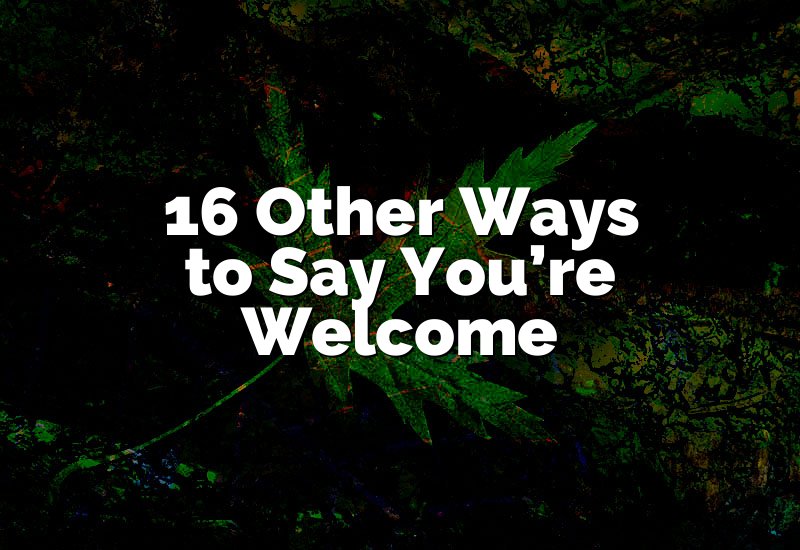
Frequently Asked Questions (FAQs)
Is it okay to use casual phrases with strangers
Yes, using casual phrases like no problem or anytime with strangers can be okay in many situations. It depends on the context and your comfort level. Casual phrases show friendliness and make conversations feel easy. If you are in a formal setting, it is better to use polite phrases like my pleasure or glad to help. Casual phrases are more suitable for informal settings, like chatting with peers, neighbors, or casual acquaintances. Always notice the tone of the conversation. If the person seems formal, polite options are safer. Using casual phrases with strangers helps you seem approachable and kind. It can make a conversation relaxed and friendly without being rude. Practicing these phrases will make them feel natural.
Can these phrases be used in emails
Yes, many of these phrases can be used in emails, but it depends on the tone of the email. In professional emails, polite phrases like my pleasure, glad to help, or of course are better. Casual phrases like no problem or you got it are fine in informal emails to colleagues or friends. Using these phrases in emails shows kindness and friendliness. Always consider the relationship with the recipient. Emails give a chance to write phrases clearly, so the other person feels appreciated. Choosing the right phrase makes your email sound professional yet warm. You can mix phrases to make your emails friendly but respectful.
Do I need to change phrases depending on the culture
Yes, culture plays a big role in how phrases are received. Some phrases may be too casual in formal cultures. For example, no problem might feel informal in some countries, while my pleasure or glad to help is polite everywhere. Learning the cultural context helps you respond appropriately. Using culturally friendly phrases shows respect and understanding. It is important in workplaces, international emails, or travel situations. Some cultures appreciate humility, so phrases like it was nothing or don't mention it work well. Being aware of cultural differences makes your communication smooth and polite. Using the right phrase builds positive relationships.
Is it okay to use these phrases with kids
Yes, using these phrases with kids is great. Phrases like anytime, sure thing, or no worries are easy for kids to understand. Polite phrases like my pleasure or glad to help are also good to teach manners. Kids learn communication by example, so using friendly phrases shows kindness. Repeating phrases helps them remember polite ways to respond. Using simple phrases makes your interaction warm and encouraging. Kids enjoy hearing happy phrases like happy to help or it's my joy. Practicing these phrases daily helps kids develop social skills.
Can these phrases show emotion
Yes, many of these phrases show warmth, happiness, or friendliness. Phrases like it's my joy, happy to help, or my pleasure express positive emotions. Casual phrases like no worries or anytime show relaxed friendliness. Using these phrases makes conversations feel personal and kind. Tone of voice also matters when speaking. Adding a smile or friendly tone enhances the emotion. Showing emotion through phrases makes people feel appreciated and respected. It creates connection and positivity in communication. Choosing emotional phrases carefully improves relationships with friends, family, or colleagues.
Do I need to use these phrases all the time
No, you do not need to use these phrases all the time. Sometimes a simple nod, smile, or okay is enough. Using phrases too often can sound repetitive. Choose phrases depending on the situation and your comfort. Mixing phrases makes your communication feel natural. Being flexible is important. It is good to have many options for saying you are welcome. Using the right phrase at the right moment shows awareness. Varying your responses makes conversations friendly and engaging. Always consider who you are talking to.
Is it better to be casual or polite
It depends on the situation and relationship. Polite phrases like my pleasure or glad to help work in formal settings and with strangers. Casual phrases like no problem, anytime, or no worries are great with friends, family, or coworkers. Being polite is safe in professional settings, but casual phrases create friendly vibes in informal situations. Matching the tone of the conversation is important. You can start polite and switch to casual if the conversation feels relaxed. Reading the other person's mood helps you choose the right phrase. Using both politely and casually shows you are kind and adaptable.
Can I mix these phrases
Yes, mixing phrases is natural and fun. You can say glad to help and anytime in one conversation. Mixing shows warmth and friendliness. It keeps conversations interesting and avoids repetition. People feel appreciated when you vary your responses. Mixing also helps you sound natural and human. You can start polite and then switch to casual depending on the conversation. Using different phrases builds stronger connections. Practicing mixing helps you speak fluently. Always match the tone and mood of the person you are talking to. Using variety makes your responses feel genuine and friendly.
Final Thoughts
There are many easy ways to say you are welcome. Using different phrases keeps conversations warm, friendly, and polite. Casual phrases work with friends, while polite phrases are best for formal situations. Practicing these phrases makes communication natural and enjoyable. You can choose the right phrase depending on the person, mood, or setting.




